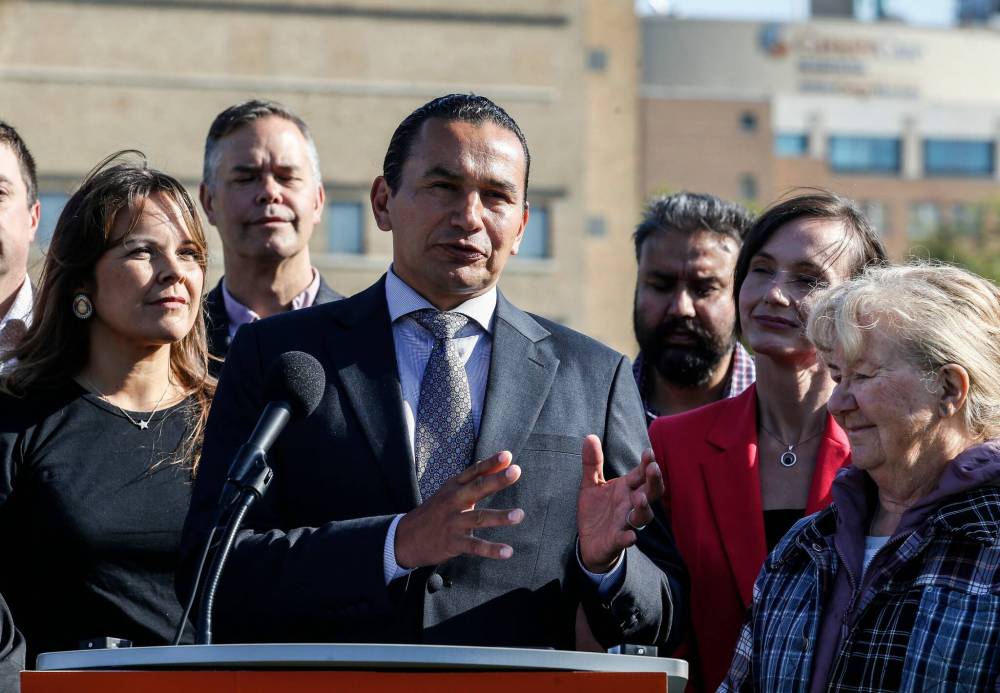It’s all about framing the questions
Advertisement
Read this article for free:
or
Already have an account? Log in here »
To continue reading, please subscribe:
Monthly Digital Subscription
$0 for the first 4 weeks*
- Enjoy unlimited reading on winnipegfreepress.com
- Read the E-Edition, our digital replica newspaper
- Access News Break, our award-winning app
- Play interactive puzzles
*No charge for 4 weeks then price increases to the regular rate of $19.00 plus GST every four weeks. Offer available to new and qualified returning subscribers only. Cancel any time.
Monthly Digital Subscription
$4.75/week*
- Enjoy unlimited reading on winnipegfreepress.com
- Read the E-Edition, our digital replica newspaper
- Access News Break, our award-winning app
- Play interactive puzzles
*Billed as $19 plus GST every four weeks. Cancel any time.
To continue reading, please subscribe:
Add Free Press access to your Brandon Sun subscription for only an additional
$1 for the first 4 weeks*
*Your next subscription payment will increase by $1.00 and you will be charged $16.99 plus GST for four weeks. After four weeks, your payment will increase to $23.99 plus GST every four weeks.
Read unlimited articles for free today:
or
Already have an account? Log in here »
Hey there, time traveller!
This article was published 19/09/2023 (806 days ago), so information in it may no longer be current.
With the provincial election day just two weeks away, many pundits and academics will soon attempt to identify the big “ballot box question” — the single binary choice issue — that will decide the election’s outcome.
They will be wasting their time and misleading their audiences. In a province as economically, culturally and geographically diverse as ours, it is rarely possible to define a single “yes or no” issue that could form the basis upon which even a large percentage of voters would cast their respective ballots for one party’s candidate or another.
Indeed, an issue of great importance to voters living in Winnipeg’s North End is often of zero significance to someone living in Fort Whyte. A polarizing issue inside the Perimeter often means nothing to those living outside the Perimeter, let alone to residents of northern Manitoba.

JOHN WOODS / WINNIPEG FREE PRESS
Focusing strictly on the leader, like the NDP’s Wab Kinew, can be a campaigning mistake.
The three major political parties know that, and that’s why they have been working to devise a number of questions over the course of the campaign, hoping that at least one of the commitments they make or issues they discuss will resonate with each voter.
Think of it as a form of “communications carpet bombing.” Eventually, something connects.
For the incumbent Tories, the preferred ballot box question is whether an inexperienced NDP government, with an inexperienced leader, is worth the risk. With affordability being a growing issue for many voters, a secondary question is which party can be trusted to not raise taxes.
After that, the Tories also have several “dog whistle” questions cynically aimed at less tolerant elements of our society — Indigenous rights, gay rights and the so-called “parental rights” issue are three examples.
For the NDP, the two-part question they want voters asking themselves before voting is this: Have you had enough of the Tories; do you want the positive change that an NDP government would deliver, or more cuts and conflict from the current government?
The NDP would love to make better health care and education the big question, but it could backfire on them because many voters remain unconvinced that an NDP government would really do a better job on those issues.
The Liberals, on the other hand, would be ecstatic if the question voters ask themselves before voting is this: after decades of failure by successive Conservative and NDP governments, isn’t it time for a third option?
Notably absent from the parties’ preferred ballot box questions is an issue that is too often ignored during provincial election campaigns. With our leader-centric approach to politics, the parties and media focus far too much on party leaders and too little on the qualities of the team of MLAs that would make up those parties’ cabinet and caucus in government.
In 1999, the incumbent Progressive Conservatives committed a fatal tactical error by making Gary Filmon, their unpopular leader, the focus of their campaign when they had a team of candidates that was clearly superior to the NDP team. They never made that argument to voters, and the penalty for that error was a 17-year stint on the opposition benches.
Surprisingly, the Tories are making that same mistake in this election campaign. Despite more than a year of public opinion polls having shown that PC leader Heather Stefanson is far less popular than her party — that she is literally costing them votes — they continue to make her the focal point of their campaign.
That’s a mistake.
They should be making the ballot box question whether voters want a cabinet composed of steady, experienced leaders like Kelvin Goertzen, Rochelle Squires, Jon Reyes, Obby Khan and Kevin Klein or an inexperienced and unreliable NDP cabinet with Nahanni Fontaine as deputy premier and attorney general, Mark Wasyliw as finance minister and Nello Altomare running our education system.
The NDP are ironically making the same mistake, by making their campaign all about leader Wab Kinew. Giving greater profile to the skills and backgrounds of their various candidates could reassure voters concerned about Kinew’s inexperience and troubled past.
As this “too close to call” election campaign enters the home stretch, the framing of ballot box issues is of decisive importance. The party that is able to craft the questions voters will ask themselves as they enter the ballot booth will likely emerge as the winner.
Deveryn Ross is a political commentator living in Brandon. deverynrossletters@gmail.com X: @deverynross












